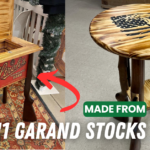I. Introduction to Forging
II. Benefits of Forging Your Own Product
III. Steps to Creating Your Unique Product through Forging
IV. Tips for Successful Forging
Do you have a passion for creating unique, one-of-a-kind items? Have you ever considered trying your hand at forging? If you’re not familiar with the process, don’t worry – we’re here to guide you through the exciting world of forging.
What is Forging?
Forging is a traditional method of shaping metal using heat and pressure. It involves heating metal until it’s malleable, then hammering or pressing it into the desired shape. This process not only increases the strength and durability of the metal but also allows for intricate designs and details to be added.
Forging has been around for centuries and is still widely used today in creating everything from tools and weapons to jewelry and decorative items. It’s a versatile and rewarding craft that allows for endless possibilities in creating unique, handmade products.
Whether you’re a seasoned blacksmith or a complete beginner, forging is a skill that can be learned and mastered with practice and dedication. And the best part? You can create your own custom pieces that reflect your style and personality.
So, if you’re ready to dive into the world of forging and unleash your creativity, keep reading to discover the benefits of forging your own products, as well as the steps to creating your very own masterpiece.
Benefits of Forging Your Own Product
So, you’ve decided to take on the exciting challenge of forging your own product. Congratulations on embarking on this creative journey! While it may seem like a daunting task, there are a myriad of benefits to forging your own product that make the process incredibly rewarding.
1. Unleash Your Creativity
Forging allows you to unleash your creativity and create a product that is truly unique to you. Whether you’re forging a piece of jewelry, a decorative item, or a functional tool, you have the freedom to design and craft something that reflects your personal style and vision. The possibilities are endless, and the only limit is your imagination.
2. Quality and Durability
Forged products are known for their superior quality and durability. When you forge your own product, you have full control over the materials and the manufacturing process, ensuring that your final product is strong, sturdy, and built to last. Whether you’re forging a knife, a sculpture, or a piece of furniture, you can trust that your creation will stand the test of time.
3. Personal Satisfaction
There is a unique sense of satisfaction that comes from creating something with your own hands. When you forge your own product, you can take pride in the fact that you have brought your vision to life through hard work, skill, and dedication. The feeling of accomplishment that comes from completing a forging project is truly unparalleled.
4. Cost-Effectiveness
Forging your own product can also be a cost-effective alternative to purchasing a similar item from a store. By sourcing your own materials and investing in some basic forging tools, you can create a high-quality product at a fraction of the cost of buying it ready-made. Plus, you have the added benefit of knowing exactly where your product came from and how it was made.
5. Learn a Valuable Skill
Forging is a time-honored craft that has been passed down through generations. By forging your own product, you have the opportunity to learn a valuable skill that can be both rewarding and practical. Whether you’re a seasoned blacksmith or a beginner looking to try something new, forging offers a hands-on experience that can help you develop your craftsmanship and expand your knowledge of metalworking.
Overall, the benefits of forging your own product are vast and varied. From unleashing your creativity to enjoying the personal satisfaction of creating something with your own hands, forging offers a unique and fulfilling experience that is sure to inspire and delight. So, grab your hammer and anvil, and start forging your own masterpiece today!
III. Steps to Creating Your Unique Product through Forging
So you’ve decided to try your hand at forging your own product – congratulations! It can be a fun and rewarding process that allows you to create something truly unique. Here are some steps to help guide you through the forging process:
1. Design Your Product
Before you start forging, it’s important to have a clear idea of what you want to create. Take some time to sketch out your design and think about the materials you’ll need. Consider the size, shape, and functionality of your product.
2. Gather Your Materials
Once you have your design in place, it’s time to gather your materials. Make sure you have all the tools and equipment you’ll need for the forging process. This may include a forge, an anvil, hammers, tongs, and safety gear.
3. Heat the Metal
Before you can start shaping the metal, you’ll need to heat it in the forge. Make sure to heat the metal to the correct temperature for forging – this will depend on the type of metal you’re working with. Use a pair of tongs to place the metal in the forge and monitor the temperature carefully.
4. Shape the Metal
Once the metal is heated to the correct temperature, it’s time to start shaping it. Use a hammer and anvil to carefully shape the metal according to your design. Take your time and be patient – forging is a precise process that requires skill and attention to detail.
5. Cool and Finish Your Product
After shaping the metal, it’s important to cool it slowly to avoid cracking or warping. You can cool the metal in water or by letting it air cool, depending on the type of metal you’re working with. Once the metal is cool, you can finish your product by cleaning, polishing, and adding any final touches.
6. Test Your Product
Before using or selling your forged product, it’s important to test it to ensure it’s safe and functional. Check for any defects or weaknesses in the metal and make any necessary adjustments. Once you’re satisfied with the quality of your product, it’s ready to be enjoyed or shared with others.
Remember, forging is a skill that takes time and practice to master. Don’t be discouraged if your first few attempts don’t turn out perfectly – keep practicing and learning from your mistakes. With dedication and patience, you can create beautiful and unique products through forging.
Tips for Successful Forging
So, you’ve decided to take on the exciting challenge of forging your own product. Congratulations on stepping into the world of blacksmithing and creating something unique with your own hands! To help you on this journey, here are some tips to ensure your forging experience is successful:
- Start with Safety: Safety should always be your top priority when forging. Make sure to wear appropriate safety gear such as gloves, goggles, and a leather apron to protect yourself from heat and sharp objects. Also, ensure your workspace is well-ventilated and free from any potential hazards.
- Use the Right Tools: Having the right tools for the job is essential for successful forging. Invest in high-quality hammers, tongs, anvils, and other equipment to make your forging process smoother and more efficient.
- Practice Good Hammer Control: Hammer control is crucial in forging to ensure precision and accuracy in shaping your metal. Practice your hammering technique to develop control and consistency in your strikes.
- Heat Management: Properly heating your metal is key to forging success. Pay attention to the color of the metal as it heats up and make sure to heat it evenly to avoid weak spots or cracking.
- Plan Your Design: Before you start forging, have a clear plan for the design of your product. Sketch out your ideas and measurements to guide you through the forging process and help you achieve your desired outcome.
- Take Breaks: Forging can be physically demanding, so make sure to take regular breaks to rest and recharge. Listen to your body and avoid overexerting yourself to prevent injuries.
- Practice Patience: Rome wasn’t built in a day, and neither is a masterpiece forged in one sitting. Be patient with yourself and your progress, and remember that forging is a skill that takes time to master.
- Seek Feedback: Don’t be afraid to seek feedback from experienced blacksmiths or peers on your forging technique. Constructive criticism can help you improve and refine your skills for future projects.
- Celebrate Your Successes: Finally, don’t forget to celebrate your successes, no matter how small they may seem. Each finished product is a testament to your hard work and dedication to the craft of forging.
By following these tips, you’ll be well on your way to forging your own unique products with confidence and skill. Remember, forging is both an art and a science, so don’t be afraid to experiment, learn from your mistakes, and enjoy the creative process of shaping metal with fire and hammer.







Comments